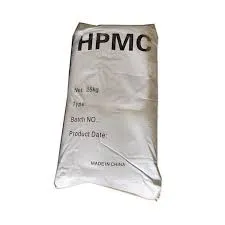
ਦਸੰ. . 14, 2024 22:28 Back to list
The Benefits and Applications of Redispersible Polymer Powder in Construction Materials
The Significance of Redispersible Polymer Powder in Modern Construction
In the evolving landscape of construction materials, redispersible polymer powders (RDPs) have emerged as a significant innovation, enhancing the performance and versatility of various applications. RDPs are typically used as additives in mortars, adhesives, and coatings, transforming traditional products into high-performance solutions capable of meeting the diverse demands of modern construction.
What are Redispersible Polymer Powders?
Redispersible polymer powders are fine, free-flowing powders composed of polymer emulsions that have been dried. Upon reconstitution with water, these powders form stable polymer films, bringing numerous advantages to construction materials. They are derived from various polymers, such as styrene-acrylic, vinyl acetate, and ethylene-vinyl acetate copolymers, allowing manufacturers to tailor properties to suit specific applications.
Benefits of Using RDPs
1. Improved Adhesion One of the key advantages of RDPs is their ability to enhance the adhesion of cement-based products. When mixed into mortars or adhesives, redispersible polymer powders create a stronger bond between the substrate and the applied materials. This leads to improved performance in challenging environments, where moisture and temperature fluctuations can undermine traditional products.
2. Flexibility and Elasticity RDPs impart greater flexibility and elasticity to construction materials. This resilience is particularly beneficial in applications such as tile adhesives and repair mortars, where flexibility reduces the risk of cracking and failure due to movement or settling of the substrate.
3. Water Resistance The incorporation of redispersible polymer powders into formulations can significantly improve water resistance. This feature is crucial in areas exposed to moisture, such as bathrooms, kitchens, and outdoor settings. RDPs help create a barrier that prevents water penetration, enhancing the longevity and durability of the construction work.
4. Workability RDPs enhance the workability of cement-based mixtures. They improve the flow and application properties, making it easier for contractors to apply materials uniformly and efficiently. This increased workability aids in achieving smoother finishes and better performance in complex installations.
re dispersible polymer powder

5. Reduced Dust Formation When using traditional cement products, dust formation can pose a significant issue, affecting health and safety on construction sites. RDPs significantly reduce dust formation during mixing and application, contributing to a safer working environment.
Applications of RDPs
Redispersible polymer powders find application across various sectors of the construction industry. They are commonly used in
- Tile Adhesives RDPs improve the bond strength and flexibility of tile adhesives, ensuring long-lasting installations that can withstand the rigors of daily use. - Repair Mortars By enhancing adhesion and elasticity, RDPs contribute to effective repair solutions for concrete and masonry structures, addressing cracks and surface damages. - Thin-Set Mortars In the application of thin-set mortars, RDPs ensure excellent bonding properties with reduced risk of shrinkage and cracking. - Exterior Insulation and Finish Systems (EIFS) RDPs are integral in EIFS, where they promote adhesion and moisture resistance, essential for maintaining insulation performance.
Environmental Considerations
As sustainability becomes increasingly important in the construction industry, the use of RDPs aligns with eco-friendly practices. These polymer powders can reduce the consumption of cement, leading to lower carbon emissions. Furthermore, the improved durability of materials incorporating RDPs extends the lifecycle of constructions, promoting resource conservation.
Conclusion
In summary, redispersible polymer powders represent a transformative advancement in construction materials, offering a blend of performance, versatility, and sustainability. Their ability to enhance adhesion, flexibility, and durability makes them an invaluable resource in modern construction practices. As the construction industry continues to evolve, the role of RDPs is likely to become even more critical in meeting the demands for high-quality, long-lasting structures. Embracing these innovative materials will not only improve construction outcomes but also contribute to a more sustainable future in the built environment.
-
Versatile Hpmc Uses in Different Industries
NewsJun.19,2025
-
Redispersible Powder's Role in Enhancing Durability of Construction Products
NewsJun.19,2025
-
Hydroxyethyl Cellulose Applications Driving Green Industrial Processes
NewsJun.19,2025
-
Exploring Different Redispersible Polymer Powder
NewsJun.19,2025
-
Choosing the Right Mortar Bonding Agent
NewsJun.19,2025
-
Applications and Significance of China Hpmc in Modern Industries
NewsJun.19,2025







